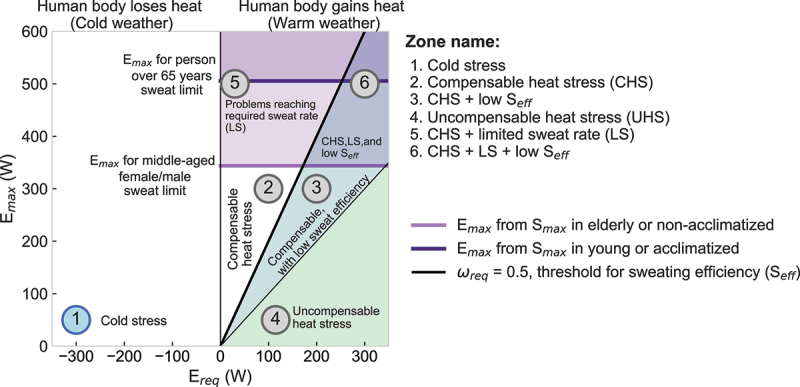Figure 2.

Relationships between the need for heat loss (positive values) or heat gain (negative values) to reach thermal equilibrium (, x-axis) against the potential evaporative heat losses given a set of environmental conditions and clothing insulation (, y-axis). The ratio of -to- relates the degree of thermal stress to heat exerted on the body (required skin wettedness, ). Critical values of are represented with black lines: 0.5 for low-efficient heat loss (thick line) and 1 to limit compensable/uncompensable heat stress (thin line). The purple lines represent values of for the young/acclimatized and elderly/non-acclimatized when the liquid sweat loss is non-replenished. The vertical gray line at = 0 indicates thermal equilibrium. Therefore, the numbered zones correspond to 1) cold stress, 2) compensable heat stress (CHS), 3) CHS with low sweating efficiency (CHS + Low , 4) uncompensable heat stress (UHS), 5) CHS with limited sweat rate (CSH + LS), and 6) CHS + Low + LS.
